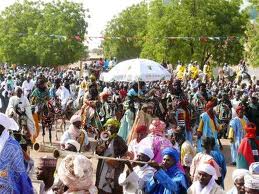History: The Origin Of Fulani People Culture And More..(pictures)
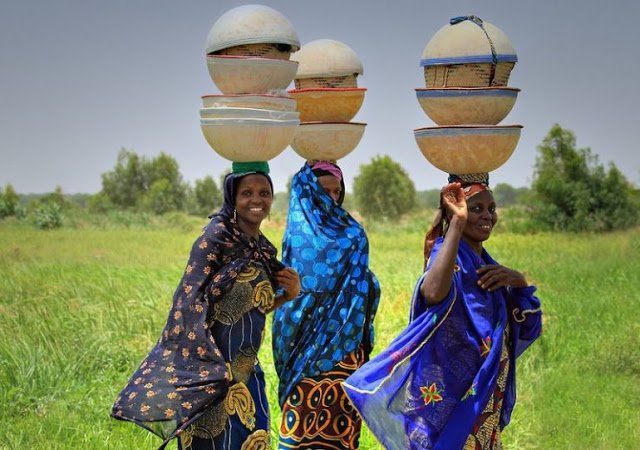
INTRODUCTION
The Fulani are one of the most populous
ethnic groups in West Africa and are said to be present in twenty
countries stretching from Senegal in the West to Chad in the east, and
even as far as Sudan and Ethiopia. Known for travelling over great
distances with their herds of cattle, the Fulani are actually not all
nomads; a good fraction of the 7 million or more Fulanis who are found
in Nigeria live in permanent settlements.
They speak the Fulfulde language- although many have also taken up the
Hausa language, which is widely spoken in Northern Nigeria.
Nigeria’s history; the Sokoto Caliphate, which contributed greatly to
the entrenchment of Islam in the north, was founded by Uthman Dan Fodio,
who was himself a Fulani. His success was due in large part to the
determination of the Fulani (in collaboration with Hausa commoners), to
overthrow what they saw as corrupt and oppressive rulers. However,
despite the well-documented role they played in shaping Nigeria’s
current cultural and religious reality, it is difficult to trace their
history further back than a point in the 11th century. But it is known that they had come into what is now Nigeria from the region further to the northwest, and gradually made their presence felt from around the 16th century.
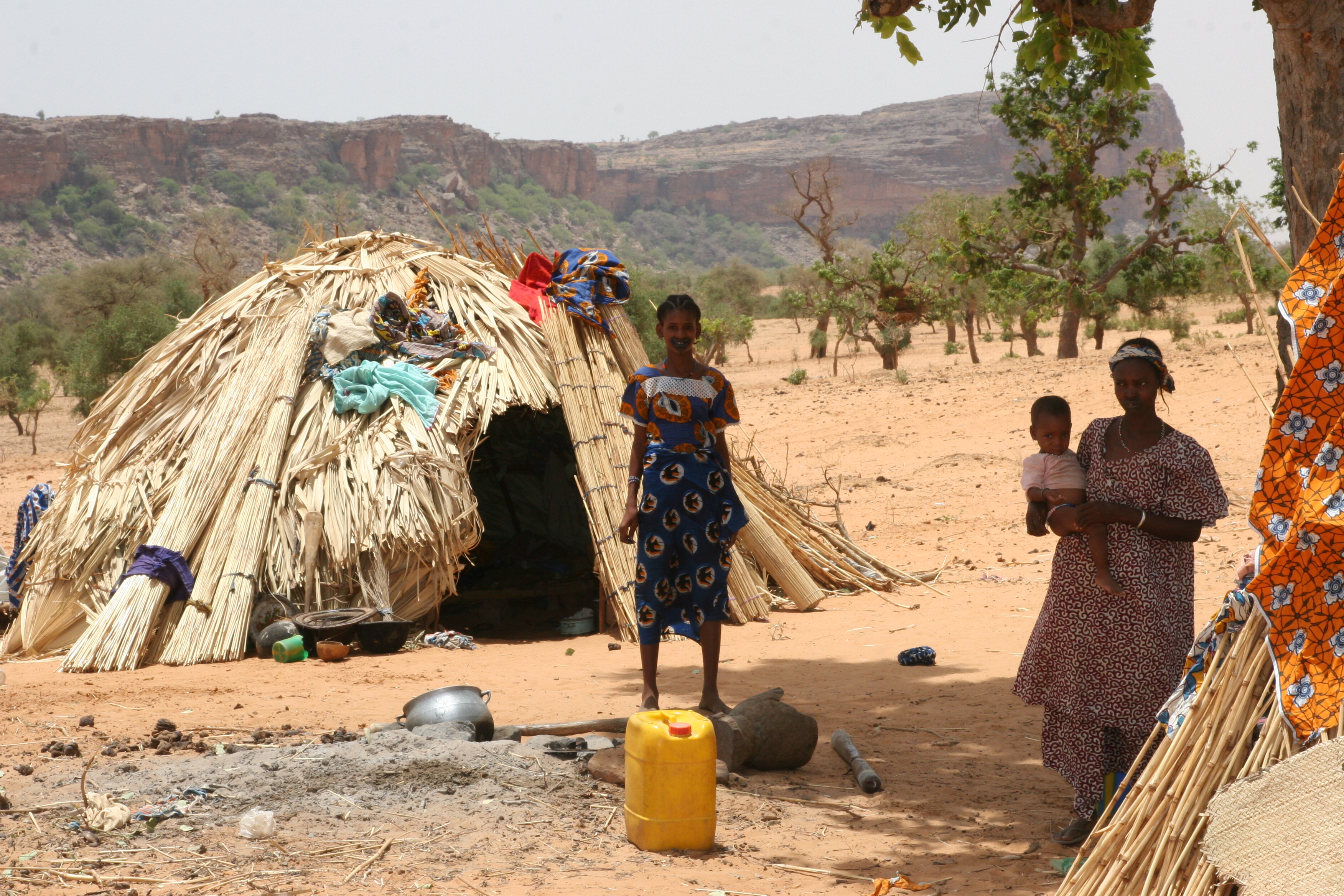
Identification. “Fulbe” is the preferred self-name of the group the Hausa
term the “Fulani” or “Hilani.” In French countries, they tend to be
termed “Peul” or “Fulata.” Because of their spread over a wide area and
their assumption of cultural traits from surrounding groups, there is
great confusion regarding the nature of Fulani ethnicity. This confusion
is reflected in the confounding and conflating of names for particular
segments or local groups of Fulbe, such as Toroobe and Bororo’en, with
the entire ethnic group.
Location. The Fulani live in an area that stretches from Ouadaï, a city east of Lake Chad, to Senegal’s Atlantic shore. There are groups of Fulani as far east as the border of Ethiopia.
Demography. Estimates of the number of Fulani vary. A major
problem in reckoning the population is that Fulani are found in twenty
nations in a wide swath of Africa—from Mauritania and Senegal to Sudan, Ethiopia, and Kenya. Only Liberia
may not have any Fulani settlements. It seems reasonable to accept an
estimate of 7 to 8 million nomadic Fulani and 16 million settled Fulani.
Linguistic Affiliation. The language is variously known as
“Fulfulde,” “Pulaar,” “Fula,” or “Peul,” among other names. It belongs
to the West African Subfamily of the Niger-Congo Group, along with
Wolof, Serer, and Temne. There are many variations and dialects of
Fulfulde. The influence of surrounding peoples is clearly seen in its
local variations. Fulfulde is generally written in Roman script,
although in the past it was written in Arabic.
History and Cultural Relations

A search for the origin of the Fulani is not only futile, it betrays a
position toward ethnic identity that strikes many anthropologists as
profoundly wrong. Ethnic groups are political-action groups that exist,
among other reasons, to attain benefits for their members. Therefore, by
definition, their social organization, as well as cultural content,
will change over time. Moreover, ethnic groups, such as the Fulani, are
always coming into—and going out of—existence.
Rather than searching for the legendary eastern origin of the Fulani,
a more productive approach might be to focus on the meaning of Fulani
identity within concrete historical situations and analyze the factors
that shaped Fulani ethnicity and the manner in which people used it to
attain particular goals.
People whom historians identify as Fulani entered present-day Senegal
from the north and east. It is certain that they were a mixture of
peoples from northern and sub-Saharan Africa. These pastoral peoples
tended to move in an eastern direction and spread over much of West
Africa after the tenth century.
Their adoption of Islam
increased the Fulanis’ feeling of cultural and religious superiority to
surrounding peoples, and that adoption became a major ethnic boundary
marker. The Toroobe, a branch of the Fulani, settled in towns and mixed
with the ethnic groups there. They quickly became noted as outstanding
Islamic clerics, joining the highest ranks of the exponents of Islam,
along with Berbers and Arabs. The Town Fulani (Fulbe Sirre) never lost
touch with their Cattle Fulani relatives, however, often investing in
large herds themselves. Cattle remain a significant symbolic repository
of Fulani values.
The
Fulani movement in West Africa tended to follow a set pattern. Their
first movement into an area tended to be peaceful. Local officials gave
them land grants. Their dairy products, including fertilizer, were
highly prized. The number of converts to Islam increased over time. With
that increase, Fulani resentment at being ruled by pagans, or imperfect
Muslims, increased.
That resentment was fueled by the larger migration that occurred
during the seventeenth century, in which the Fulani migrants were
predominantly Muslim.
These groups were not so easily integrated into society as earlier
immigrants had been. By the beginning of the eighteenth century, revolts
had broken out against local rulers. Although these revolts began as
holy wars (jihads), after their success they followed the basic
principle of Fulani ethnic dominance.
The situation in Nigeria
was somewhat different from that elsewhere in West Africa in that the
Fulani entered an area more settled and developed than that in other
West African areas. At the time of their arrival, in the early fifteenth
century, many Fulani settled as clerics in Hausa city-states such as
Kano, Katsina, and Zaria.
Others settled among the local peoples during the sixteenth and
seventeenth centuries. By the seventeenth century, the Hausa states had
begun to gain their independence from various foreign rulers, with Gobir
becoming the predominant Hausa state.
The urban culture of the Hausa was attractive to many Fulani. These
Town or Settled Fulani became clerics, teachers, settlers, and judges—and
in many other ways filled elite positions within the Hausa states. Soon
they adopted the Hausa language, many forgetting their own Fulfulde
language. Although Hausa customs exerted an influence on the Town
Fulani, they did not lose touch with the Cattle or Bush Fulani.
These ties proved useful when their strict adherence to Islamic
learning and practice led them to join the jihads raging across West
Africa. They tied their grievances to those of their pastoral relatives.
The Cattle Fulani resented what they considered to be an unfair cattle
tax, one levied by imperfect Muslims. Under the leadership of the
outstanding Fulani Islamic cleric, Shehu Usman dan Fodio, the Fulani
launched a jihad in 1804. By 1810, almost all the Hausa states had been
defeated.
Although many Hausa—such as Yakubu in Bauchi—joined
dan Fodio after victory was achieved, the Fulani in Hausaland turned
their religious conquest into an ethnic triumph. Those in Adamawa, for
instance, were inspired by dan Fodio’s example to revolt against the
kingdom of Mandara. The leader was Modibo Adamu, after whom the area is
now named. His capital is the city of Yola. After their victories, the
Fulani generally eased their Hausa collaborators from positions of power
and forged alliances with fellow Fulani.
Settlements
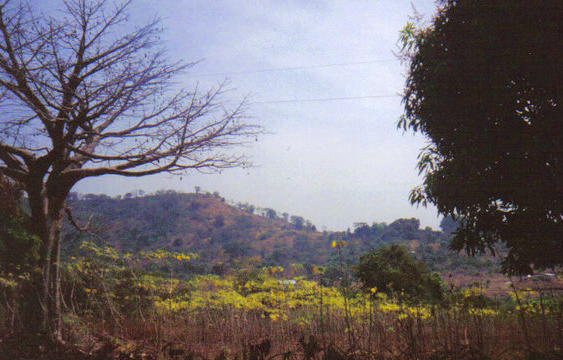
For the fully nomadic Fulani, the practice of transhumance, the
seasonal movement in search of water, strongly influences settlement
patterns. The basic settlement, consisting of a man and his dependents,
is called a wuru. It is social but ephemeral, given that many
such settlements have no women and serve simply as shelters for the
nomads who tend the herds.
There are, in fact, a number of settlement patterns among Fulani. In
the late twentieth century there has been an increasing trend toward
livestock production and sedentary settlement, but Fulani settlement
types still range from traditional nomadism to variations on
sedentarism. As the modern nation-state restricts the range of nomadism,
the Fulani have adapted ever increasingly complex ways to move herds
among their related families: the families may reside in stable
communities, but the herds move according to the availability of water.
Over the last few centuries, the majority of Fulani have become
sedentary.
Those Fulani who remain nomadic or seminomadic have two major types
of settlements: dry-season and wet-season camps. The dry season lasts
from about November to March, the wet season from about March to the end
of October. Households are patrilocal and range in size from one
nuclear family to more than one hundred people. The administrative
structure, however, crosscuts patrilinies and is territorial. Families
tend to remain in wet-season camp while sending younger males—or, increasingly, hiring non-Fulani herders—to accompany the cattle to dry-season camps.
Town
Fulani live in much the same manner as the urban people among whom they
live, maintaining their Fulani identity because of the prestige and
other advantages to which it entitles its members. In towns, Fulani
pursue the various occupations available to them: ruler, adviser to the
ruler, religious specialist, landlord, business, trade, and so forth.
Economy
Subsistence and Commercial Activities. The Fulani form the
largest pastoral nomadic group in the world. The Bororo’en are noted for
the size of their cattle herds. In addition to fully nomadic groups,
however, there are also semisedentary Fulani—Fulbe Laddi—who
also farm, although they argue that they do so out of necessity, not
choice. A small group, the Fulbe Mbalu or Sheep Fulani, rely on sheep
for their livelihood.
The Toroobe are outstanding clerics in the Sunni branch of Islam.
They have generally intermarried with Hausa and no longer speak
Fulfulde. They are found practicing other urban trades: teaching,
serving in government positions, engaging in legal activities, renting
property, financing trade, and so forth.
Many of the other Town Fulani were actually slaves of the Fulani who
now identify with the group because of their high prestige. These urban
dwellers engage in all the trades one finds in Hausa towns from crafts
to long-range trade throughout Africa and the world.
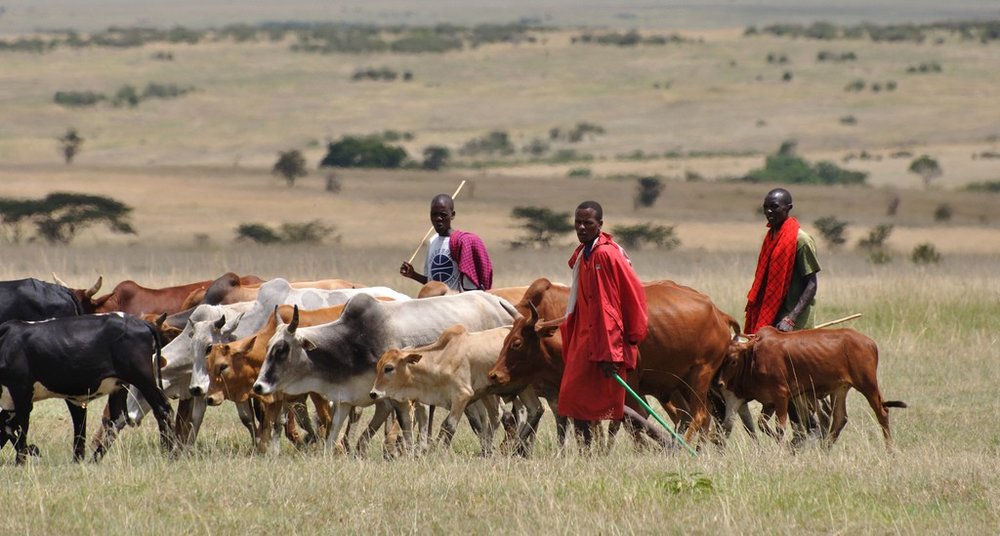
Industrial Arts. The Fulani are not particularly noted for
industrial arts, except for those associated with cattle. They do engage
in leatherworking and some craft production. Many of their former
slaves who have assumed Fulani ethnicity follow the basic crafts of
other West Africans: silver- and gold-smithing, ironworking, basket
making, and similar crafts.
Trade. The Fulani are engaged in long-distance trade,
generally involving cattle, with their Hausa colleagues. Often the Hausa
are also butchers who control West African cattle markets by
controlling access to Fulani cattle.
Division of Labor. Herding cattle is a male activity.
Tending and milking cattle, however, are women’s work. Women may also
sell dairy products; their graceful movement with containers of milk or
cheese is a common sight in West African towns. Adolescent males
traditionally have been in charge of moving the herds, whereas their
elders deal with the political decisions and negotiate with sedentary
people for the safe movement of the herds through farmlands.
Land Tenure. Land is held by—and inherited through—the patrilineage. As the Fulani have become increasingly sedentary—generally as a result of the pressure of the modern nation state and its centralized control—rights in land have become increasingly important.
Kinship
Kin Groups and Descent. The Fulani are patrilineal and
patrilocal. Kinship and seniority are vital to their way of life. The
basic elements of kinship are sex, age, and generation. Full siblings
tend to unite against half-siblings, although half-siblings with the
same mother do share a special bond.
The
Fulani have a principle of generational seniority that is embodied in
the general organization of lineages. There are four general lineages,
all traced to descent from a common ancestor and his sons; however,
everyday groups cut across these yettore lines. Such groups developed to meet historical needs. Over time, patrilineages—much shallower than the four general lineages—emerged. These patrilineages, in turn, are intersected by territorial groups under men called “guides.”
Patrilineages are named and consist of three ascending generations.
They are coresidential, and members cooperate in pastoral pursuits. The
patrilineage controls marriage and is endogamous. A clan is a cluster of
lineages, and the clan members generally share a wet-season camp.
Kinship Terminology. There is a good deal of ambiguity in
the Fulani use of kinship terms. Thus, any of these terms can be used to
refer to a specific person or a range of people. Part of this ambiguity
results from the Fulani preference for close marriage so that any
person might, in fact, be addressed or referred to by any of several
terms.
Goggo is used for father s sister or paternal aunt. Bappanngo is father’s brother, whereas kaawu refers to mother’s brother; dendiraado designates a cross cousin, and sakike is a sibling. Baaba is father, and yaaye is mother; biddo or bu is a child. These terms are often combined, however. Thus, sakiraabe refers to both siblings and cousins of all sexes. A true sibling if elder is termed mawniyo ; if younger, minyiyo. Maama refers both to grandparents, of either sex, and their sakiraabe and their grandchildren. When it is necessary to distinguish male from female, a term may be added: biddi for male, and dibbo for female.
Marriage and Family
Marriage. Ideally, the Fulani do not practice birth control
because the perfect or model Fulani marriage will produce many children.
Toward that goal, the Fulani marry young. No special value is placed on
virginity, and women are not shy about boasting about their various
experiences. In fact, the Fulani expect young women to bring sexual
experience to marriage. There are even special dances in which women
select mates, with the proviso that the mate selected not be her fiancé or a particular category of relative—one to whom she could be affianced, for example.
At the same time, a woman is expected to display appropriate modesty
whenever the subject of marriage arises, for marriage confers on her a
special status. There has been some confusion regarding what constitutes
the marriage ceremony among the Fulani. Because neither bride nor groom
may be present at the ceremony, owing to shame-avoidance taboos, the
significance of the cattle ceremony (koowgal ) has often been
overlooked. In that ceremony, the bride’s father transfers one of his
herd to the groom, legalizing the marriage. There may also follow a more
typical Islamic ceremony, termed kabbal Again, neither bride nor groom may actually be present at the ceremony.
An important public acknowledgment of the marriage is the movement of the bride to her husband’s village, termed bangal.
The women of that village come to greet her, and the welcome is a rite
of passage for the bride. The bride’s status increases with each child
she has, especially with the birth of males.
The Fulani prefer endogamy. Their first choice of a marriage partner
is a patrilateral parallel cousin. If that is not possible, their other
choices are for the partners to share a great-grandfather, a great-great
grandfather, or a patrilateral cross cousin.
Domestic Unit. A man is allowed four wives. Each wife brings
cattle with her to the marriage. It is a major obligation for a woman
to milk the cattle and prepare the dairy products. A woman receives
respect from her sons and daughters-in-law.
Inheritance. Lineage members inherit cattle and
widows. Among Town Fulani, inheritance generally follows Islamic
prescriptions, with the exception that generally women do not contest
their inheritance with their full brothers.
Socialization. At 2 years of age, children are weaned. A
child’s father remains distant throughout its life. Women provide for
children’s needs. Thus, a mother and her daughters tend to the needs of
her sons. A young girl first plays at carrying dolls on her back and
then moves on to carrying her baby brother.
Among the Pastoral Fulani, baby girls are given amulets for fertility
and boys for virility. Mothers take care to preserve and shape their
children’s conformity to the Fulani ideal notions of beauty. Mothers
attempt to lengthen their children’s noses by pressing them between
their fingers, stretching, and squeezing hard. They also attempt to
shape their children’s heads into the ideal round shape.
Acquiring a culture is perceived as acquiring something that is found. The Fulani term is tawaangal. There is a sense that no one invented nor can change these traditions, for they define what it is to be Fulani.
Young children are treated with great gentleness and are rarely
disciplined. Adults seek to avoid giving them any emotional shocks. Most
training is given by a child’s mother and the other women of the
compound. They are believed to be more capable of patience and
reciprocity. Young girls are initiated into their adult work through
games. The young girl carries her doll. At 2 or 3 years old her ears are
pierced, six holes in her right ear and six in her left. Almost as soon
as she can walk well, she is placed into the middle of a circle of
dancing women who begin to teach her to dance and praise her efforts
lavishly.
Indeed, the transition to adulthood proceeds in smooth steps. At
about 5 years of age, girls are taught the rules of the moral code -mbo. There are to be no sexual relations of any kind with brothers. A woman may not look at her fiancé
in the face. She must demonstrate respect for elders and must never
mention her future parents-in-law. Women have two essential roles in
Fulani society, that of sister and daughter. Either at her naming
ceremony or just before she leaves her father’s home for her husband’s, a
woman’s father presents her with a heifer. There is shame for a man on
entering his daughter’s home; however, the strong affection he
demonstrates for his grandchildren is meant to show his affection for
his daughter as well.
Young boys play at taking care of the cattle and performing men’s
work. Mothers come to rely more on sons than on daughters because
daughters will leave the compound upon marriage.
Sociopolitical Organization

Social Organization. The Fulani are many different people.
Among those who term themselves “Fulani” are former slaves and members
of castes or guilds, such as blacksmiths or bards. It is important to
note that the Fulani hold that belonging to society itself is dependent
on the will of the individual.
Political Organization. Fulani tend to be the ruling caste
among Islamic communities in the northern areas of West Africa. They
control the various northern emirates in what was Northern Nigeria, for
example. They also play a major role in the modern governments of many
West African states.
Among the Cattle Fulani, a leader (ardo) of a territorial
group has a major role. Patrilineages play an important part in
regulating day-to-day matters and in controlling cattle. They also
govern marriages and widow inheritance.
Conflict. Kinship and regional groups regulate conflict
within and between groups. The Fulani often come into conflict with
settled populations among which they pass. Alliances with Town Fulani
help resolve a number of disputes between Fulani and their neighbors.
The Fulani are quick to resort to combat in the defense of their
interest but also have a reputation for waiting for the opportune moment
to seek revenge if the situation demands patience.
Religion and Expressive Culture



Religious Beliefs. Over 90 percent of the Town Fulani are Muslims. It is, in fact, rather difficult to discover any Fulani—Town or Cattle—who
admits to not being Muslim, no matter how lax his or her practice may
be. The Fulani share many beliefs with other West African Muslims. They
use Islam both as a means to distinguish themselves from others, through
the reputation of Fulani clerics, and as a link to members of other
African groups.
At the same time, there is belief in the steady-state nature of
culture that preceded Islam. Culture is seen to be unchanging and
constant from generation to generation. The only improvement a Cattle
Fulani sees possible is to have more children than his or her parents.
Otherwise, the appropriate thing to do is to live according to the code
of the ancestors.
That code stresses the symbolic importance of cattle in defining
Fulani ethnicity. There is also a requirement to respect one’s seniors
and to love one’s mother. The ethos of the Fulani is best summed up in
the concept of palaaku. It portrays the ideal Fulani as one who
has stoic sobriety, reserve, and strong emotional ties to cattle. At the
same time, the model Fulani is gentle in demeanor. His carriage conveys
a proud reserve, almost a disdain toward non-Fulani. It is said that no
one knows what a Fulani is thinking. The true Fulani is physically as
well as psychologically distant from other people, especially
non-Fulani. Moreover, he is enjoined from displays of strong emotions.
His demeanor is taciturn, loathing the boisterousness of others. Wealth
is not to be vulgarly displayed but carefully and quietly tended.
The Fulani have a number of taboos. They may not pronounce the name
of a spouse, a first son, a first daughter, a father or mother, or a
parent-in-law or the names of the parents of any beautiful girl or young
woman. In addition to observing the usual Islamic dietary laws, they
may not eat goat meat, lest they become lepers.
Religious Practitioners. As Muslims, the Fulani share with
other Muslims reliance on traditional Islamic religious practitioners
and are themselves prominent members of the Islamic clerical class. In
common with other West Africans, however, Fulani will frequent local
religious practitioners who have established reputations for their
curative powers and supernatural abilities.
Ceremonies. Various life-cycle events—naming, acceptance of young girls into the group, marriage, first child, and so on—are
marked by ceremonies. The Shar’o ceremony demonstrates to the community
that a young man has come of age. In it, adolescent friends take turns
beating each other across the chest with their walking sticks. No sign
of pain or discomfort can be shown. Although adolescents have died in
this ceremony, young men are eager to participate and display their
scars with pride throughout their lives.
Arts. The Fulani are noted for their oral literature, which
celebrates the concept of palaaku and serves to define Fulani identity.
Fulani oral literature has been influenced both by surrounding peoples
and by Islam. The major categories of Fulani literature are poetry,
history, story, legend, proverb, magic formula, and riddle. Many of
these genres are sung, either by amateurs or by professionals.
Medicine. The Fulani participate in a number of medical
systems. One is an Islamic system, basically derived from the Arabs and
through them from Greco-Roman sources. They share many traditions with
the groups among whom they live. Since the onset of British colonization—around the turn of the twentieth century—they
have been exposed to Western medical practices. In common with other
West Africans, they have incorporated elements from these various
systems in a rather syncretistic and pragmatic fashion.
Death and Afterlife. If one lives up to the palaaku code and obeys Allah’s
laws, there will be rewards in the afterlife. The Fulani, in common
with other Muslims, believe in an afterlife of material rewards for the
followers of Allah.
SOURCES/Bibliography:
Azarya, Victor (1978). Aristocrats Facing Change. Chicago: University of Chicago Press.
Ba, Amadou Hampata (1990). Ou t of the Land of Shadows.” UNESCO Cornier, May, 22-25.
Dupire, Marguerite (1973). “Women in a Pastoral Society.” In Peoples and Cultures of Africa, edited by Elliott P. Skinner, 297-303. Garden City, N.Y.: Doubleday.
Eguchi, Paul K. (1993). “‘Fulbe-ness’ in Fulbe Oral Literature of Cameroon.” In Unity and Diversity of a People: The Search for Fulbe Identity, edited by Paul K. Eguchi and Victor Azarya, 181-200. Senri Ethnological Studies, no. 35. Osaka: National Museum of Ethnology.
Eguchi, Paul K., and Victor Azarya, eds. (1993). Unity and Diversity of a People: The Search for Fulbe Identity. Senri Ethnological Studies, no. 35. Osaka: National Museum of Ethnology.
Frantz, Charles (1981). “Settlement and Migration among Pastoral Fulbe in Nigeria and Cameroun.” In Contemporary Nomadic and Pastoral Peoples,
edited by Philip Carl Salzman, 57-94. Studies in Third World Society,
Publication no. 17. Williamsburg, Va.: College of William and Mary,
Department of Anthropology.
Hopen, C. Edward (1984). “Fulani.” In Muslim Peoples: A World Ethnographic Survey. 2nd ed., rev. and expanded, edited by Richard V. Weekes, 257-261. Westport, Conn.: Greenwood Press.
Riesman, Paul (1977). Freedom in Fulani Social Life: An Introspective Ethnography. Translated by Martha Fuller. Chicago: University of Chicago Press.
Salamone, Frank A. (1985). “Colonialism and the Emergence of Fulani Ethnicity.” Journal of Asian and African Studies 20: 170-201.
Schultz, Emily A. (1981). Image and Reality in African Interethnic Relations: The Fulbe and Their Neighbors. Studies in Third World Society, Publication no. 11. Williamsburg, Va.: College of William and Mary, Department of Anthropology.
Stenning, Derrick J. (1959). Savannah Nomads: A Study of the Wodaabe Pastoral Fulani of Western Bornu Province, Northern Region, Nigeria. London: International African Institute; Oxford University Press.
Wilson, Wendy (1990). “Women Pastoralists and Project Participation.” Sage 7:18-23.
Wilson-Haffenden, James Rhodes (1967). The Red Men of Nigeria: An Account of a Lengthy Residence among the Fulani or “Red Man,” and other Pagan Tribes of Central Nigeria. London: Cass.
Wyatt-Brown, Bertram (1988). “The Mask of Obedience: Male Slave Psychology in the Old South.” American Historical Review 93:1228-1252.
